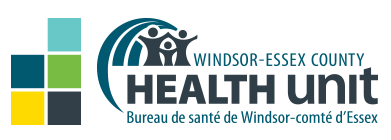PREPARED BY: Comprehensive Health Promotion
DATE: 2025-05-15
SUBJECT: Digital Technology: Connected, Not Controlled PSA
BACKGROUND/PURPOSE
Digital technology is an integral part of the daily lives of children and youth making it vital for them to learn safe and healthy ways to engage with technology. Digital technology has significantly impacted Canadian youth's mental health, with both positive and negative effects. Positive use of digital platforms provides opportunities for social connection, access to information, and educational resources for mental well-being. Conversely, research on digital technology use by children and youth shows a link to negative effects on mental health such as depression, anxiety, chronic stress, and low self-esteem. According to the Canadian Paediatric Society (2022), several trends are being seen in young children related to increased technology use including decreased levels of physical activity, sleep, and an increase in sedentary behaviour.
School Mental Health Ontario (2024) shares that the more hours per day that a young person spends on screens, the greater the risk of developing problems with their mental health. Problem technology use (PTU) is a general term for using digital technology such as video games and social media, in ways that can negatively affect a person's health and well-being related to their physical health, mental health, and social relationships (CAMH, 2024). Locally, 82% of youth in grades 7 to 12 report spending 3 hours or more a day on screens, with 50.0% of these youth reporting spending 5+ hours on screens. In addition, only 32% are meeting physical activity guidelines and 62% of students report not getting enough sleep on school nights (OSDUS, 2023). Social media usage peaks with students in Grades 9 and 10 and is more frequently used by those who identify as 2SLGBTQIA+ and females (OSDUS, 2023).
Promoting digital literacy is crucial in mitigating negative social, emotional, and overall health effects. By educating youth about healthy online behaviors, critical thinking, and digital citizenship, they can navigate digital spaces more safely and responsibly. It is essential to involve parents and educators in this educational process to cultivate good digital habits. Parents/caregivers who model healthy screen use and strategies such as family media plans and screen-free times can help families to prevent and address PTU (Lahti et. al., 2024). This collective effort will ensure a balanced approach to technology, leading to positive use and a more connected life for everyone involved.
DISCUSSION
To support digital literacy for children, youth and their families, the Comprehensive Health Promotion Department (CHP), in collaboration with youth, and with support of our local school boards, developed the Connected, Not Controlled Challenge (CNC).
The purpose of the CNC Challenge is to provide Windsor and Essex County students in grades 6 to 12 with an opportunity to use their voice to learn about and raise awareness on how the use of digital technology can affect youths’ well-being. Providing youth with evidence-based facts and strategies on the balanced use of technology can help them make informed and healthy decisions. Students are challenged to create and submit a 30 second Public Service Announcement (PSA) video that includes at least one key message about digital technology use and one call to action. The challenge has been developed based on a youth engagement. This framework supports involving youth from the development of the challenge name and logo to making the videos and ending with the selection of videos for public voting. This approach ensures the challenge and messages resonate with youth giving them an increased ability to relate to and act on messaging related to balancing technology use.
To promote the CNC challenge our CHP nurses conducted 13 promotional events at secondary schools focused on providing information about the contest and raising awareness about balancing screen time. The video submission period for the challenge is open from April 14th to May 12th. Youth judges will score the qualified videos using a rubric to rate the video’s message and quality. The top five scoring videos from the grade 6 to 8 division and the grade 9 to 12 division are selected for public voting which will be open from June 2nd to June 9th. The winning videos and schools will be announced on June 11th, 2025. Prizes will then be awarded to students for the top three voted videos in both the elementary (grade 6 to 8) and secondary (grade 9 to 12) divisions, and to the publicly funded elementary and secondary school with the highest participation rates.
The Comprehensive Health Promotion department will use the winning videos to raise awareness of the impact of digital technology use on youths’ well-being and promote resources for balancing screen time. You can find more information about the challenge on the Connected, Not Controlled Challenge web page.

